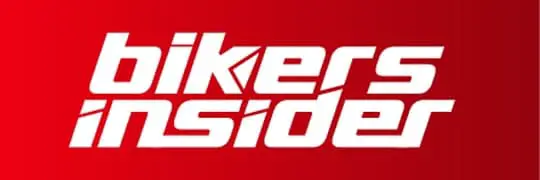Table of Contents
Introduction – Why you need a motorcycle troubleshooting guide?
When your motorcycle doesn’t start, it’s not always easy to figure out the problem, let alone fix it in time for your work commute or weekend ride. There are procedures to follow when your motorcycle won’t start. Before you do anything else, be sure the battery is, in fact, functional. After that, you can check your bike and possibly make it road-worthy on your own using simple remedies.
It’s not always easy to figure out what’s keeping your motorcycle from starting up, even if it’s a somewhat simple machine. Fortunately, We’ve solved several issues with the motorcycle, thanks to our own experiences and a little bit of luck. If you don’t know why your motorcycle won’t start or how to fix it, we can provide you with a list of likely causes and solutions.
We are going to share some common problems that cause motorcycle starting problems. If you plan to buy a motorcycle, We strongly advise you to keep a few necessary but basic tools on hand if you find yourself in a situation like this.
| Image | Tools | Price |
|---|---|---|
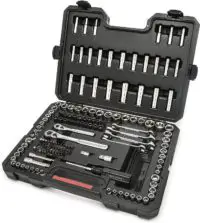 |
Craftsman 165 pc Mechanics Tool Set 36165 | Check Price |
 |
IRWIN VISE-GRIP Wire Stripper | Check Price |
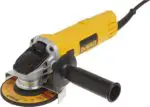 |
DEWALT Angle Grinder | Check Price |
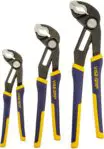 |
IRWIN VISE-GRIP GrooveLock Pliers Set | Check Price |
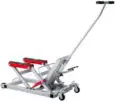 |
Pro-LifT T-2152 Grey Hydraulic Motorcycle Jack | Check Price |
Check your battery – A common issue in every motorcycle troubleshooting guide
You may think your motorcycle’s battery is fine, but you’re unsure. It is necessary to examine the battery if the bike does not start when the key is turned (but the lights do come on).
If you turn the key and hear a clicking sound, you have a dead battery, and the lights are dim.
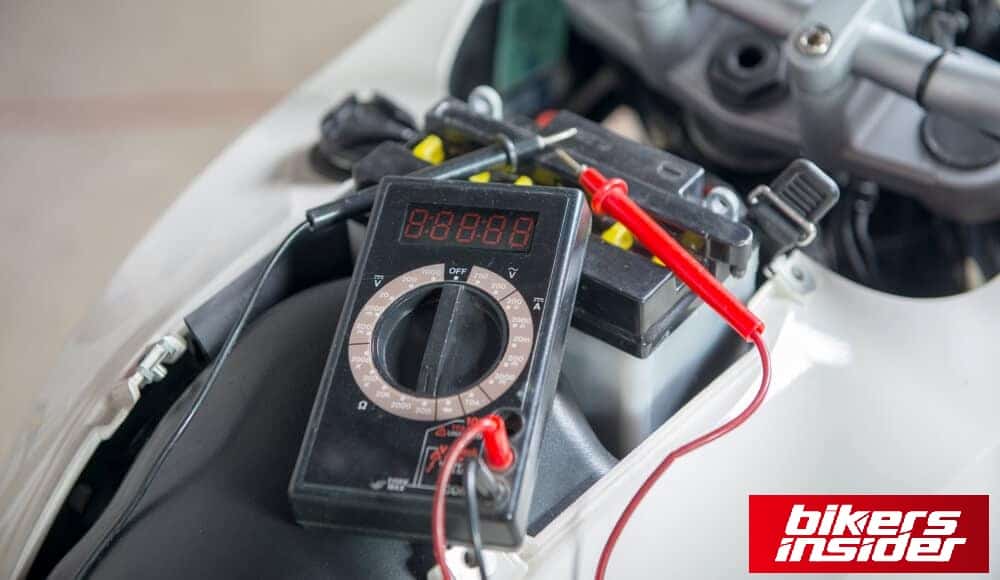
Check to see if the battery is charged and working correctly if you don’t see any of these signs. To ensure your battery is still in good working order, perform visual inspections, voltage checks, and load tests.
Check the voltage if everything is fine. Take your batteries to a professional if you don’t know how to do this yourself. While the battery is attached to the motorcycle, perform a load test with a multimeter.
The voltage should be between 9.5 and 10.5 volts for 30 seconds. This indicates that your battery is in good condition.
If your battery continues to lose power, you may want to consider using a battery tender or find the Top 5 best motorcycle batteries of 2022 of our pick.
Clean/Replace your motorcycle spark plugs
When a spark plug is prone to fail, the motorcycle runs badly, sounds louder than normal, and is practically “gutless.” Trying to start your motorcycle when the spark plug is completely out will result in it not doing so. Also, if you can’t recall when they were last updated, they’re probably out of date, too.
There are numerous reasons a spark plug can become bad. The ceramic covering is easy to crack. Installing a cracked spark plug means that instead of jumping across the gap as intended, the spark is sent scurrying down the cracked spark plug and out through the engine block. Dropping it on the ground or overheating it could cause the spark plug to break.
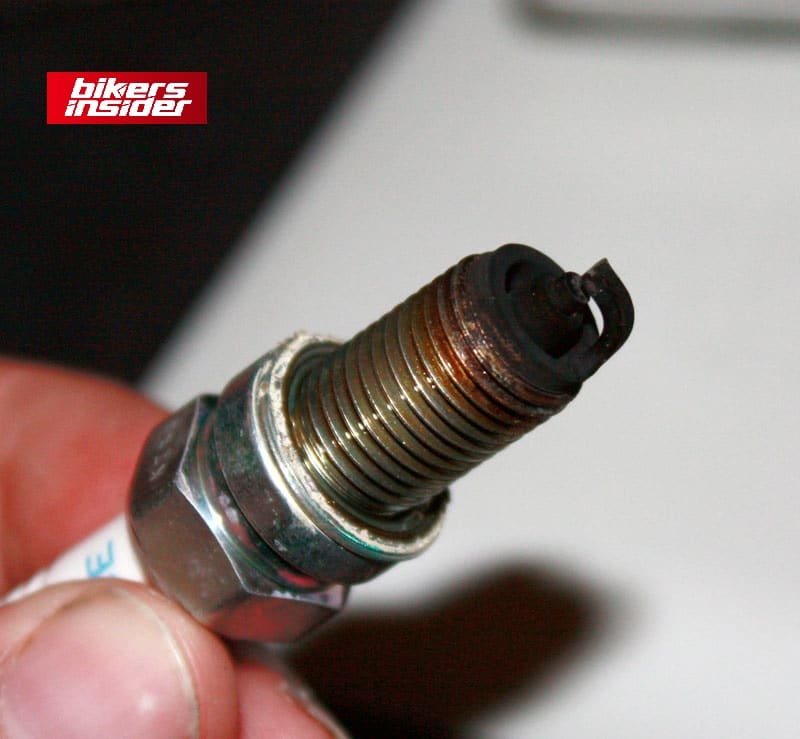
The spark plug can fail if the gap between the center and side electrodes is incorrectly placed. The manufacturer predetermined this distance and must be adhered to the spark correctly. A spark will not be produced if the electrode is placed too far or close to the hot surface.
Fortunately, removing a spark plug isn’t difficult. If you’re looking for a cheap spark plug, you’ll find them easily from any auto store. Replace all spark plugs. Your motorcycle will ride more smoothly as a result of this.
We have got you covered with our guide on How to service your motorcycle: Oil, filters, and spark plugs, so give it a try for detailed insight on the topic.
Clean your motorcycle carburettor – motorcycle troubleshooting guide
Carburetor problems can be detected in a variety of ways. Remove the air intake and inject starter fluid straight into the carburetor if you have an electric starter. The carburetor is messy if it starts and misses revs for a few seconds.
Deposits and sludge can accumulate in the fuel system. Due to their size, Carburetor jets are particularly vulnerable to the buildup of sludge, which can restrict fuel flow. A dirty carburetor might be a result of not using a gasoline filter.
Carburetors should be properly cleaned. Remove your motorcycle’s air intake and carburettor to do so. Before disassembling, take pictures of the parts to help you remember how to put them back together. Tape components together if necessary.
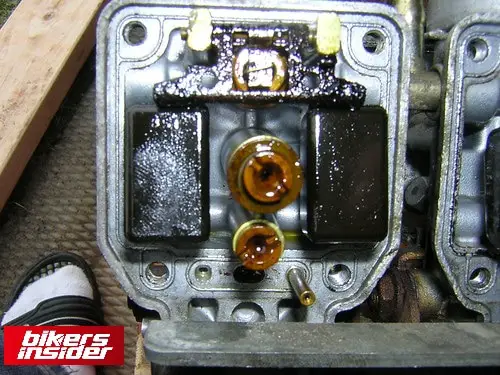
To install a new carburetor, you’ll have to take it apart from the engine. We strongly advise that you examine your owner’s manual for specific instructions. If you don’t have access to your motorcycle’s owner’s manual, follow these steps to clean the carburetor.
The seafoam cleaner is the best method for cleaning the carburetor. This is a great solution for cleaning carburetor areas that are hard to reach.
You can buy Seafoam cleaner easily by following the link.
If you don’t have access to a Seafoam cleaner, you can clean it by hand, but it won’t be as effective. Rinse it with hot soapy water. Any jams in the jet holes will affect your motorcycle’s performance.
If you still don’t know how to fix this issue, just visit our guide on How to clean a motorcycle carburetor without removing it.
Cracked spark plug wires
Unlike the other issues covered on this page, Spark plug wires have one particular symptom.
There is no need for more than a cursory examination. Look for any fractures or break in the wires by twisting and bending them. A broken spark plug wire could be dangerous when the motorcycle is running. Since you’re grounded, the spark could arc through you and cause severe burns.
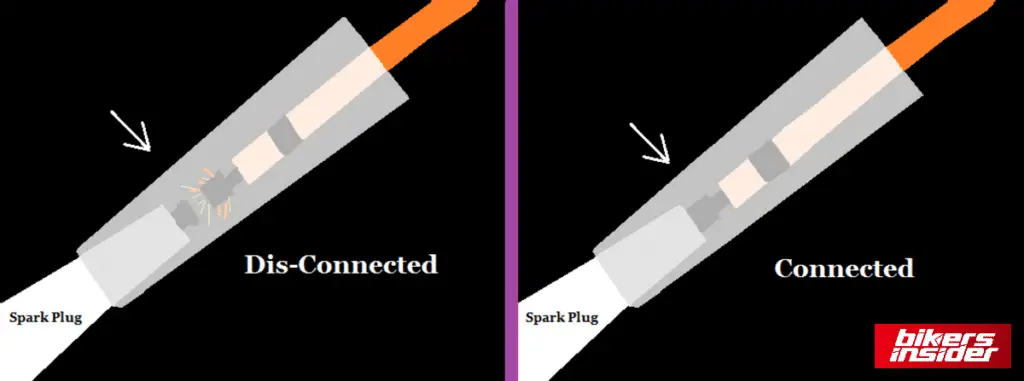
The rubber/plastic material that your cables are made of may ultimately degrade due to exposure to heat. As a result of more frequent and severe weather, this will happen faster.
It’s as simple as swapping out the wire on your spark plug. For safety reasons, you should replace all of the spark plug wires in your motorcycle if one breaks.
Cold weather
This only affects motorbikes with carburetors and does not generally affect motorcycles with fuel injection. The turns will be slower than usual, but your motorcycle will sound like it is struggling to start.
Obviously, you can calibrate this using the outside temperature. Cold weather impairs gasoline’s evaporation when mixed with air, resulting in less efficient fuel burning.
The carburettor can become iced up, making it impossible for the fuel and air mixture to move through certain parts. It is easier for fuel to ignite in a warm engine (above freezing).
Put your bike in a garage or shed. Directly heat your engine and carburetor for at least 20 minutes. The engine will not be fully warmed, but it will start. On hundreds of occasions, this method has shown to be a great success.
When feasible, keep your motorcycle covered or in a garage. You can check our post on Best motorcycle covers, tips, and buying guide for more information.
Bad ignition coil
A faulty ignition coil will result in poor spark circulation on your motorcycle. If you know you have enough fuel, your battery is connected correctly, and there are no cracks in your spark plug wires, you have a coil problem. This issue is caused by poor idling and stalling.
Your motorcycle may start, but it will not keep running and stall. Alternatively, you may be able to turn on your motorcycle but not achieve a complete start because the coil is unable to support the starter.
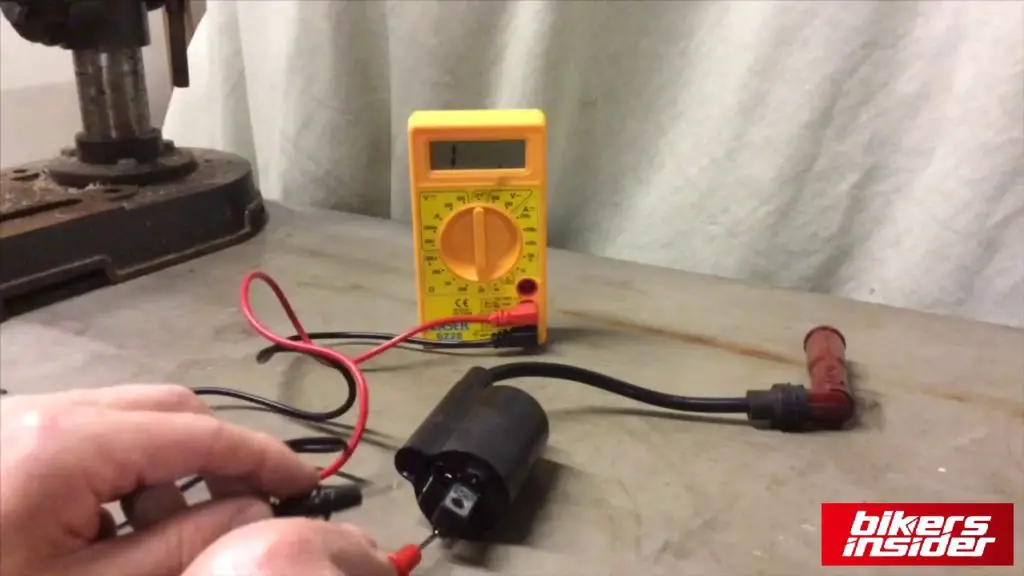
Vibration and heat can harm the winding of the coil over time. However, the most common cause of ignition coil failure is a voltage overload caused by faulty spark plugs.
A multimeter can be used to check the voltages surrounding an ignition coil to ensure that is the real issue before purchasing a new one.
Bad/Blown fuses
When you try to start the motorcycle, it will make a typical sound but will spin indefinitely with no effects. You can even try spraying starter fluid into the carburetor, but it won’t help because the fuse cannot deliver a spark to the spark plug, causing it to ignite.
In most cases, if the fuse keeps blowing, there is a problem with the grounding wire. When installing aftermarket lights or a horn, it is possible to utilize the wrong wire.

There is just one starting fuse in a motorcycle. The primary fuse on every motorcycle is 30-50 amps (occasionally, some bikes will have 20 amps) of the battery‘s positive lead. It could be a normal block fuse or an inline fuse.
Examine the main fuse to see whether it is blown. If the fuse is blown, you can tell by the presence of a black substance on the fuse or if the wires inside the fuse are severed. If necessary, replace the fuse. Any auto parts store should be able to identify the correct fuse for you.
If the fuse keeps blowing, replace it with a cheap circuit breaker until you can determine why it keeps blowing. It is similar to a fuse in that a circuit breaker would pop for a split second before returning to its normal position.
Clogged fuel injectors
When you try to start your motorcycle, it will run over normally, but there will be no combustion. If you know it’s sparking properly and there’s gas in the tank, and the bike has been standing for a long, the problem is most likely a clogged fuel injector.
Fuel injectors can also be inspected manually. You should clean or replace them if they appear dirty and clogged.

Fuel injection systems don’t have this problem very often. It’s a good idea to ride your motorcycle regularly to keep your injector clean.
The most common cause of an obstructed injector on a motorcycle is failing to regularly service the bike. Eventually, the old gelled-up fuel may block your injectors, preventing the fuel from flowing. You may find out more about the consequences of leaving your motorcycle in the garage by going here.
Fuel injectors can be cleaned in various methods, including using a cleaning solution specifically designed for them and with a tool designed for this purpose. However, given the low cost of fuel injectors, it makes more sense to buy new ones than to invest in a cleaning tool.
Defective starter
This applies only if you have an electric starter. A faulty starter can generate a variety of unusual noises. A clicking sound is one example of noise. Another sound it will make is a buzzing sound (almost like a high-pitched annoying buzz), indicating that the gears aren’t catching on anything. The third symptom to watch for is hearing no sound when you try to start it, even if you know the battery is charged and the starter is connected correctly.

The most prevalent reason for a starter to fail is ageing. These parts do not stay forever and will eventually become dysfunctional with regular use. Other factors include faulty electrical contacts and the starter becoming overheated. There is no way around it; you must simply replace the starter.
A siezed engine, a major inclusion in this motorcycle troubleshooting guide
Your engine will not even start if you have an electronic starter. Your starter will produce a brief clicking sound followed by a humming sound. That’s the sound of the electric motor and starter attempting to spin but failing. Because so much amperage is generated, you may also blow the primary fuse.
If you have a Kickstarter, putting it in neutral and not being able to kick start it (meaning you can’t move the kick starter at all) could indicate that your engine has seized or that you have a faulty transmission.
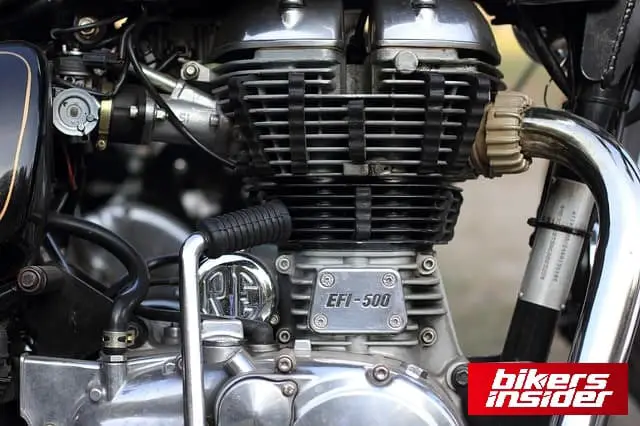
The most prevalent cause of a motorbike engine seizing is a lack of lubricant. The second explanation is that the oil is old or unclean. The third most prevalent cause is rust and grime buildup in the cylinder walls due to standing for extended periods.
There are various ways to fix a seized engine, but unless you are entirely sure that you know what you are doing, We recommend that you take your motorcycle to a workshop to get it fixed or determine why it is seized. Fixing a seized engine can be challenging depending on the severity, and tampering with it may cause more difficulties.
Check your side stand safety switch
Some newer (and some older) motorcycles may refuse to start with the side stand down. In addition to all other high-tech sensors on board, your motorcycle may include a built-in sensor that prevents the ignition from starting if the kickstand is engaged. In that case dis-engaged the side stands before starting the motorcycle.

